
How cultivation affects soil
The principle of cultivation is to turn and break down the soil to a fine tilth to provide the ideal environment for seeds to germinate. This system has been used for centuries in Europe where topsoils are deep, rainfall is high and, because of cooler temperatures, organic matter takes much longer to break down. In Australia, regular intensive cultivation by this system has degraded the soil structure. Our soils are much older, our climate is hotter and drier, and organic matter breaks down quickly.
Knowing how different cultivation implements affect soil can help you protect and conserve the soil on your farm.
Cultivation implements
Ripper (subsoiler)
Rippers or subsoilers break up compacted soil below the depth reached by conventional cultivation, to improve drainage and aeration. There are several types of deep rippers: vertical, agroplow, parabolic, C shank (SJ) and paraplow, and they can reach 30–90 cm into the soil. Most have slanted tines or a sharply angled leading point to lessen the power required to pull the ripper. This design also helps lift and shatter the subsoil so that any compacted layer is broken up.
Soil should be reasonably dry when it is ripped. Ripping wet soil does not shatter the subsoil and can smear and seal the soil beside the ripper tine. Smeared surfaces prevent air, water and roots moving through the soil.
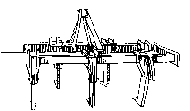
Chisel plough
Chisel ploughs are used to shatter but not turn or move the soil. They work on the same principle as rippers, but in the top 30 cm of the soil. Again, the soil must be dry to moist, otherwise the plough will smear and seal the soil surfaces.
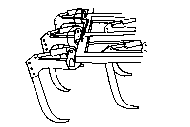
Disc ploughs and offset discs
Disc ploughs break up undisturbed soil by inverting it to bury surface weeds and trash. Regular use of disc ploughs reduces soil aggregates to small particles and produces a compacted layer or plough pan which prevents air, water or roots penetrating the subsoil. When it rains, soil particles on the surface collapse together to form a crust which repels air and water and is difficult for seedlings to break through. Offset disc ploughs, which have two rows of discs running at angles to each other, serve a similar purpose. They are usually used as a second tillage implement, and for initial tillage on lighter soils.
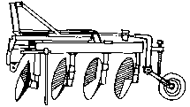
Mouldboard plough
The oblong-shaped mouldboard plough is shaped to cut and turn over soil to bury surface residue. It is rarely used in Australia's shallow topsoils as it brings up less fertile subsoil. However, it has been used successfully where hard setting or crusting occurs to bring up swelling or shrinking clay subsoil to improve topsoil structure.
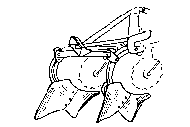
Harrows
Harrows are used for seedbed preparation and light surface cultivation to remove weeds after seeding. If used regularly they will break down and pulverise the soil structure.
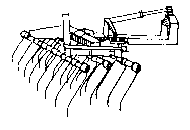
Rotary hoe
Rotary hoes aerate the soil and provide a fine seedbed. However, in the process, the rotating shoes compact the soil underneath the level they are aerating, and destroy the soil structure by pulverising the seedbed, leading to crusting and compaction when the soil is wet.
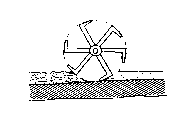
Plough pans
Plough pans are caused by the smearing action of disc ploughs continually operating at the same depth over a long period. It is difficult for plant roots, water or air to move through this pan, so plant performance is affected. The use of heavy machinery on wet soil also compacts soil over time, creating a hard layer similar to a plough pan.
Because cultivation can degrade the structure of the soil, there is an increasing trend to minimum cultivation and even no cultivation, where seed is direct drilled into undisturbed soil.
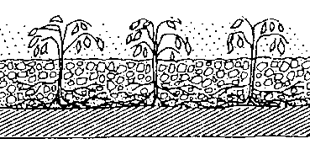
Minimum cultivation
Minimum cultivation refers to a reduction in the number of times the paddock is cultivated for crop production. On lighter soils it is often possible to plough and seed soil in one operation. This is more difficult on the heavier clay soils where roots cannot move through the soil as easily.
Direct drill
Direct drill relies on herbicides to keep competing weeds down, and organic matter to maintain soil structure and make it easy for germinating seeds to move through the soil. Retaining organic matter on the soil surface also reduces erosion and conserves soil moisture.
From the Soil Sense leaflet 6/93. Agdex 510 produced by Rebecca Lines-Kelly, formerly soils media officer, Wollongbar Agricultural Institute, for CaLM and NSW Agriculture, north coast region, under the National Landcare Program. September 1993.

